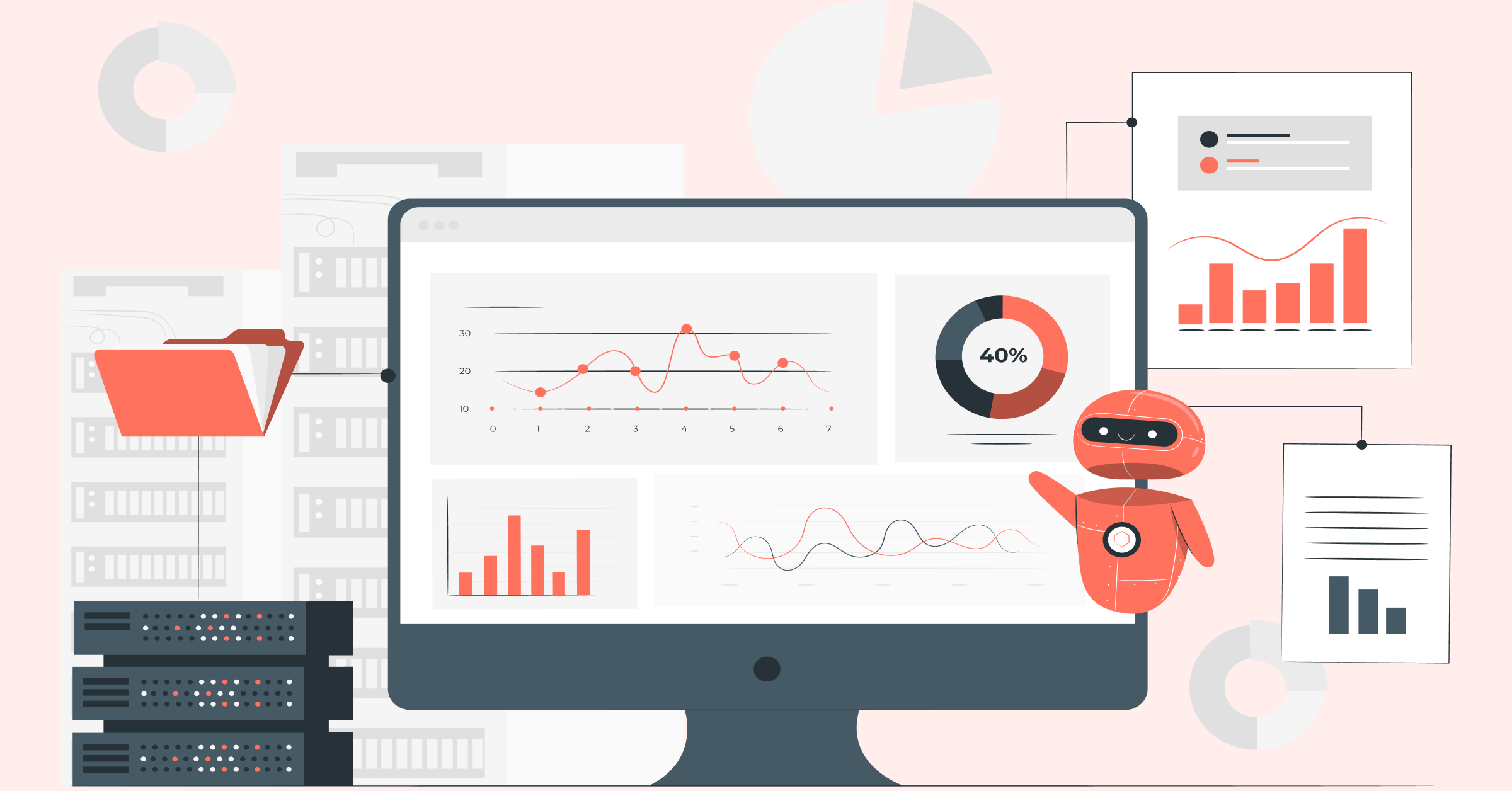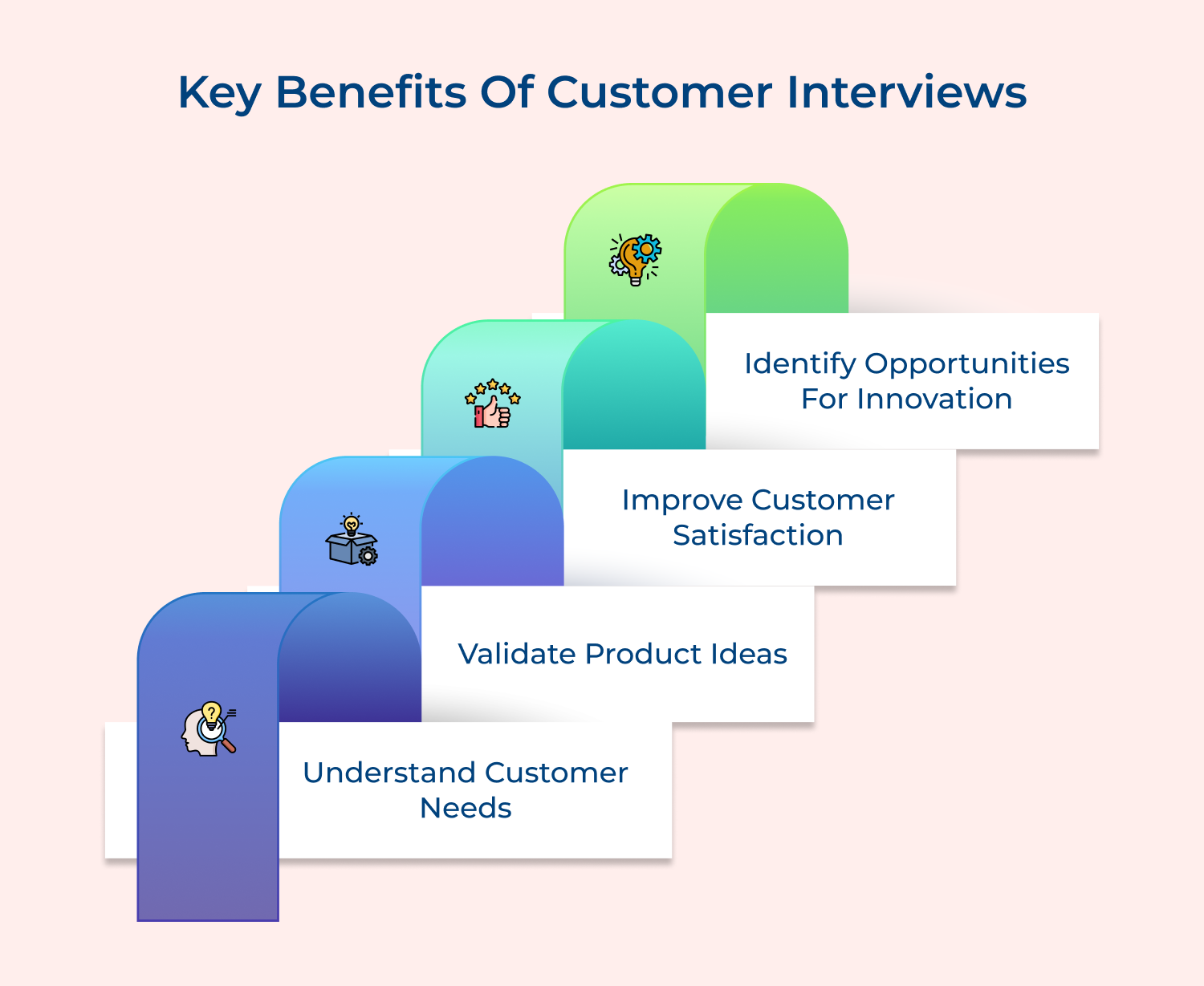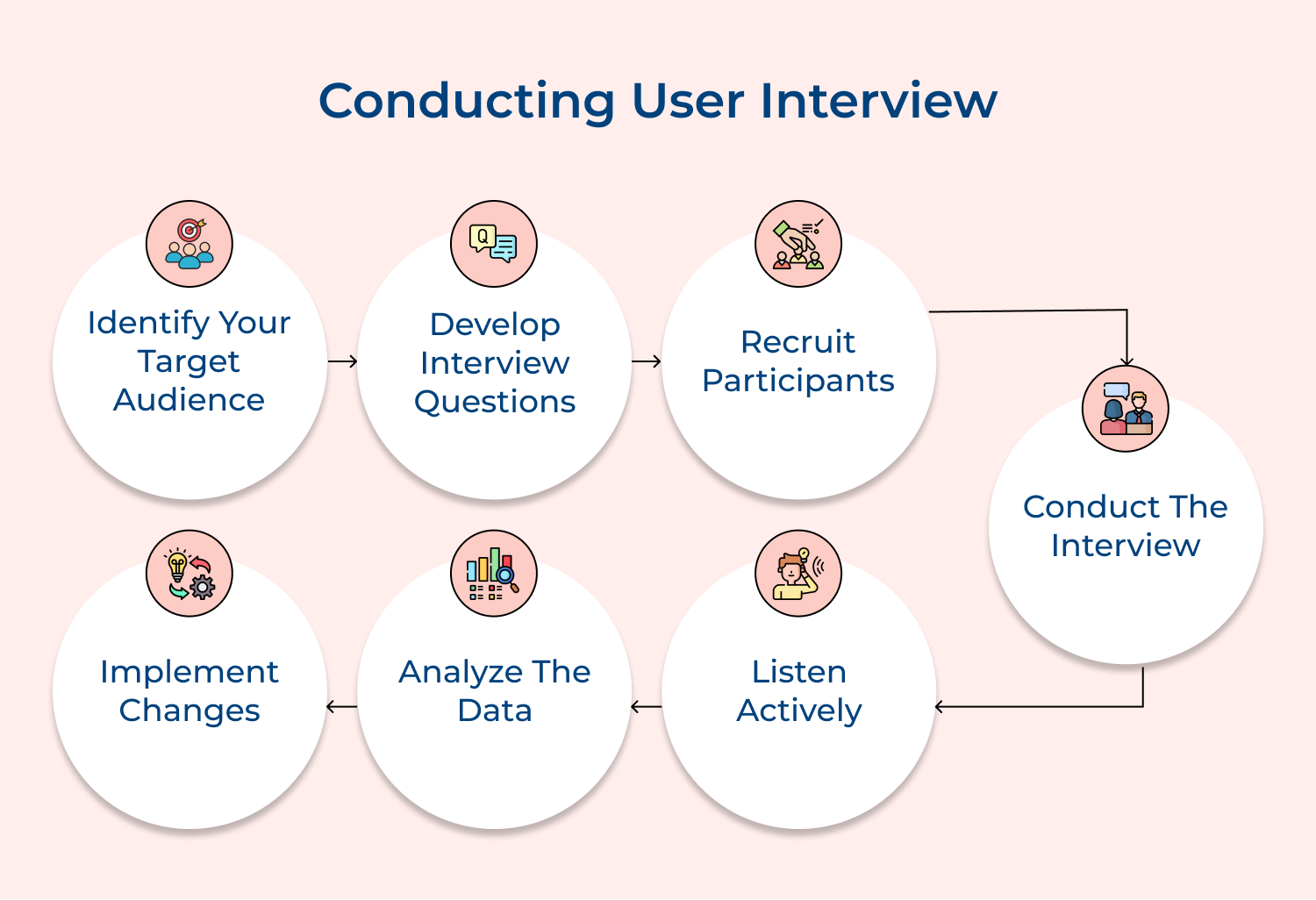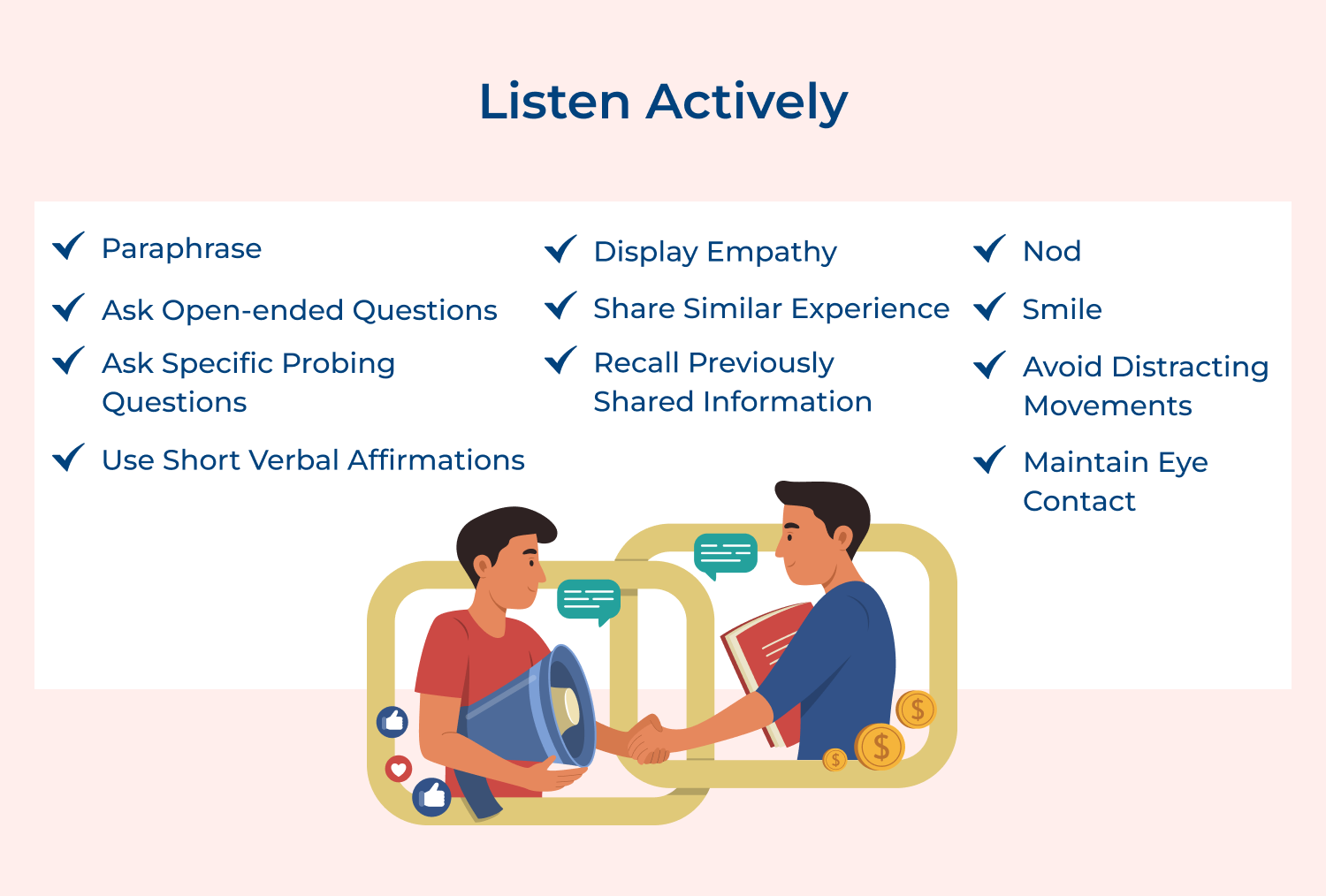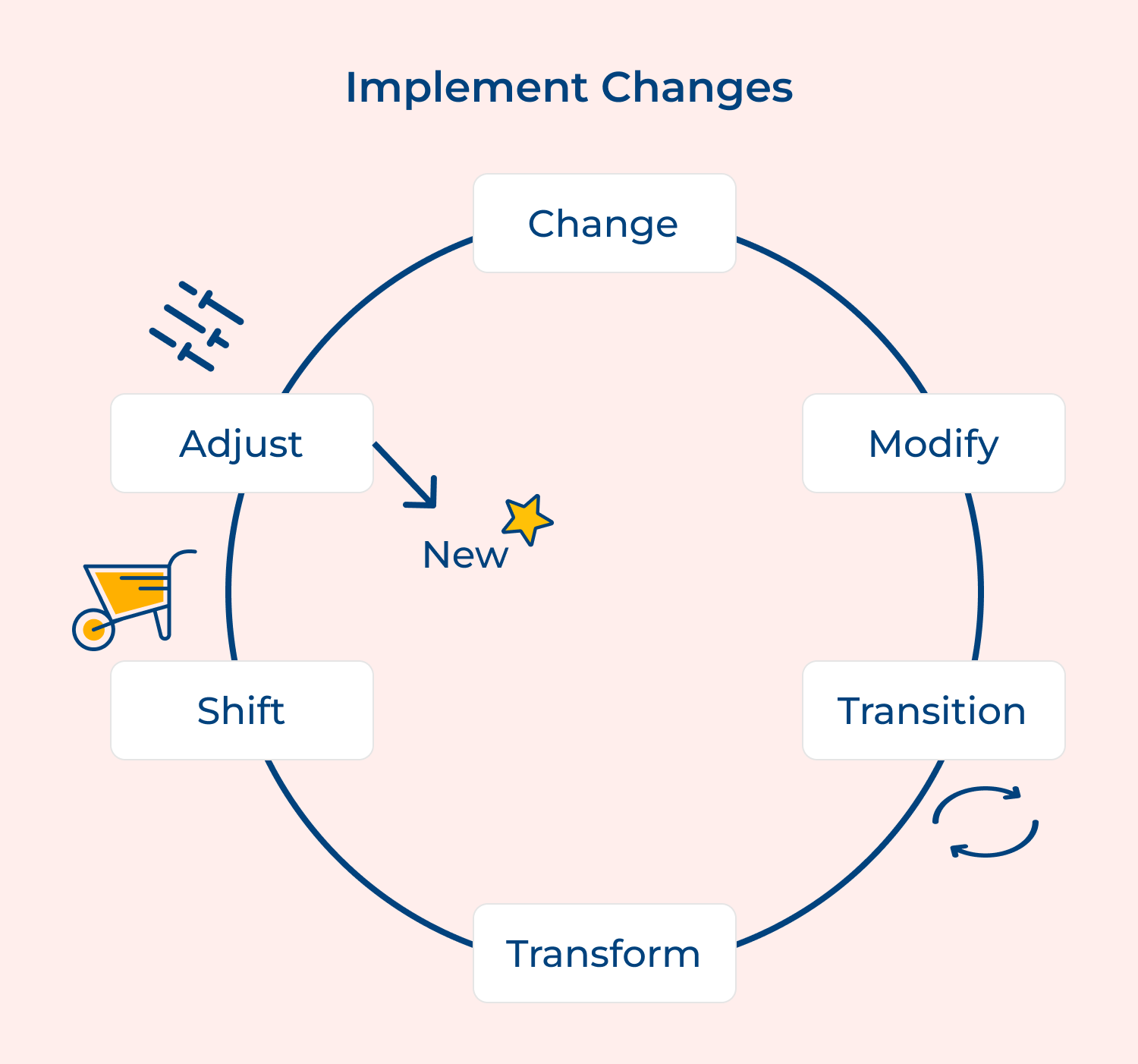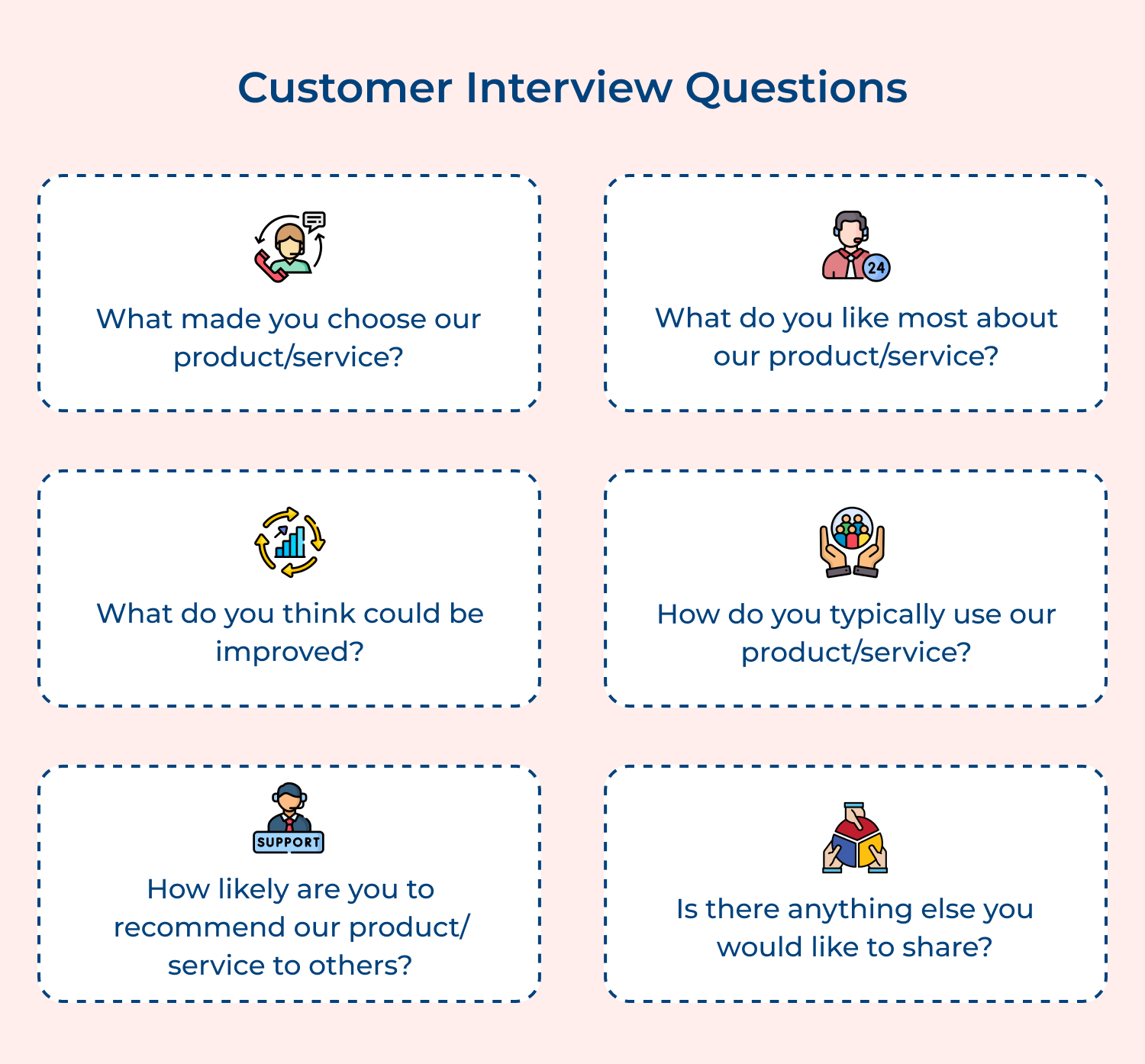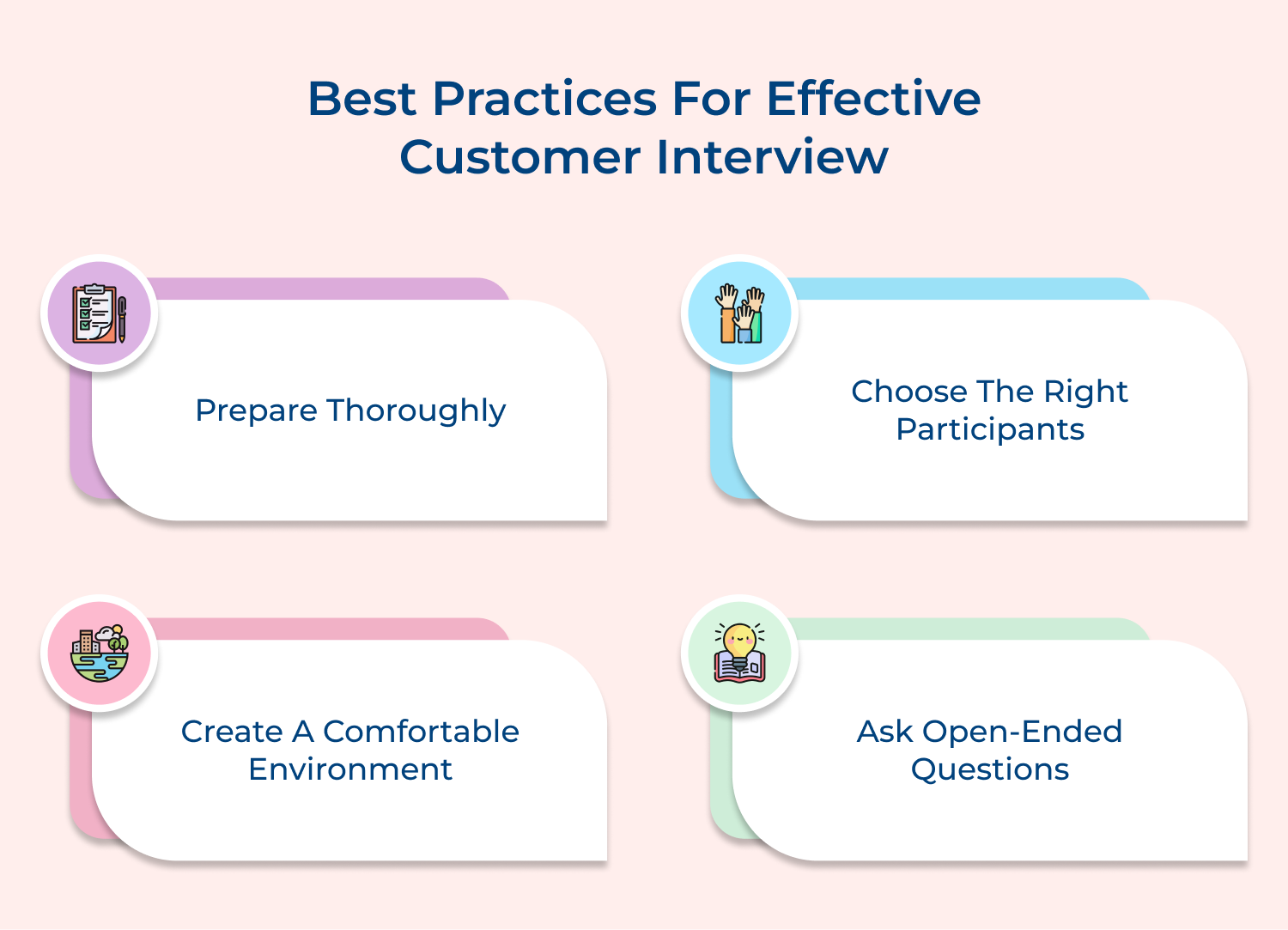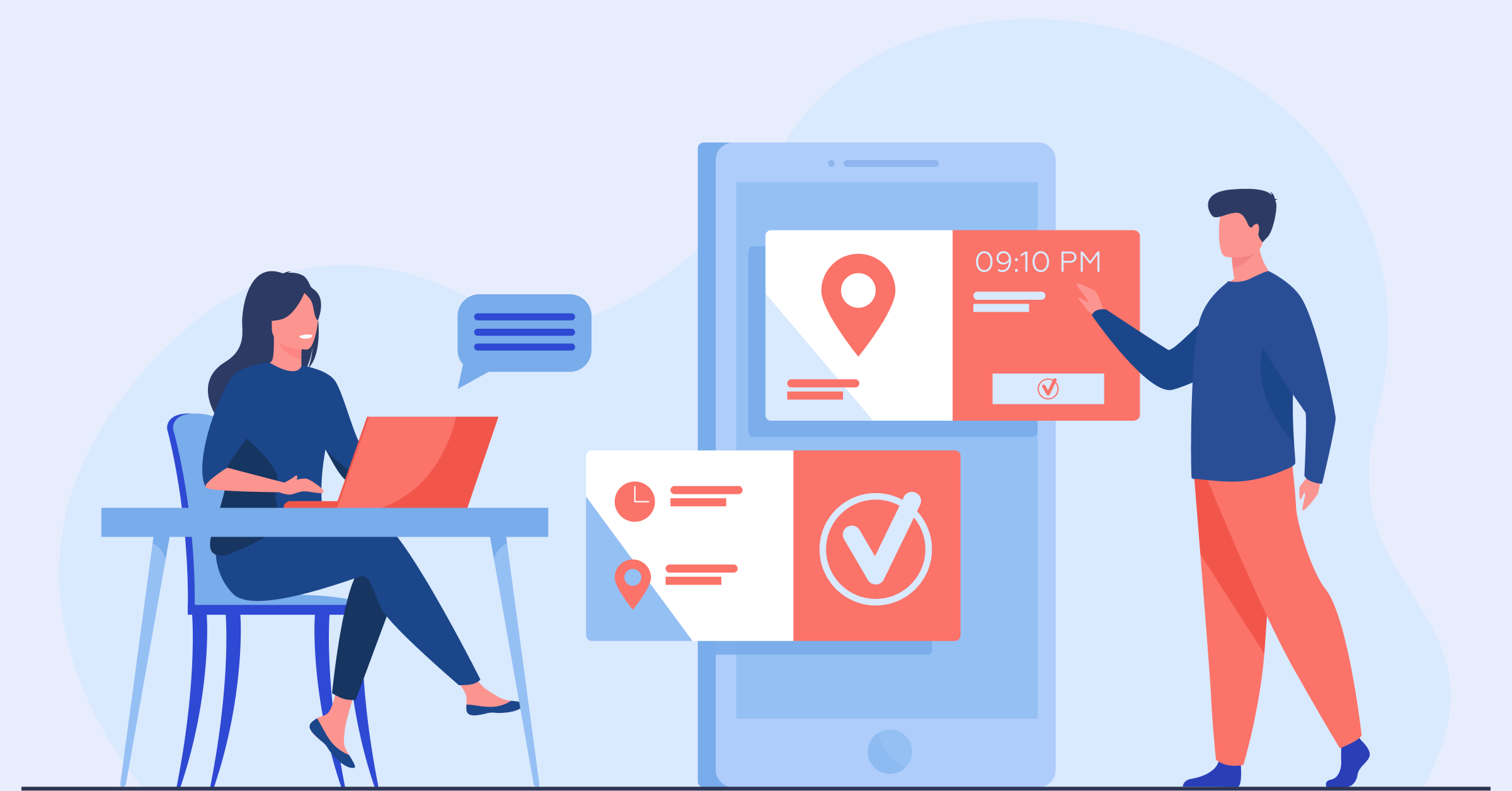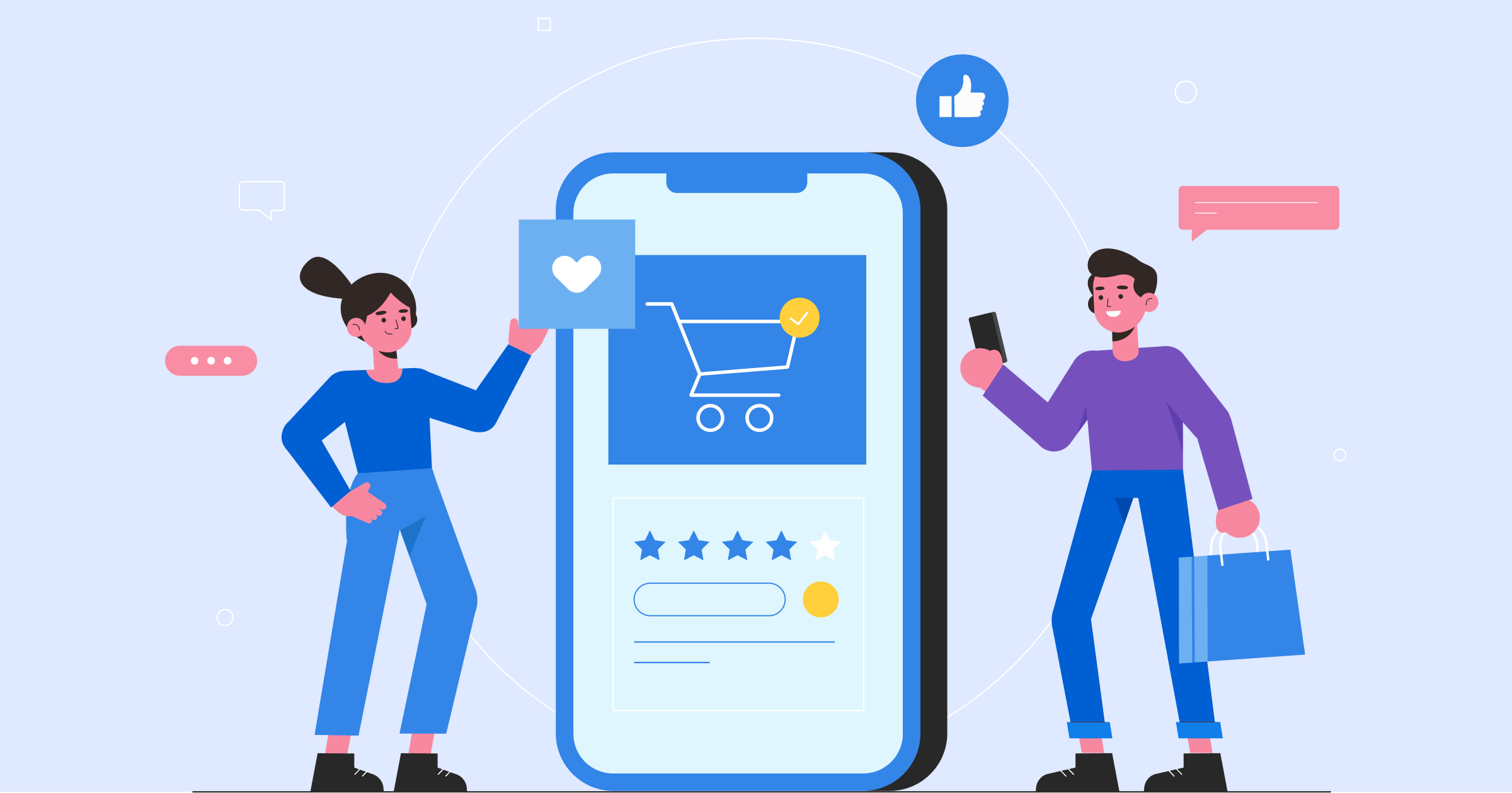- Prepare thoroughly: Before conducting a customer interview, make sure you have a clear objective. Determine what specific information you are looking to gather and create a list of relevant questions. Familiarize yourself with the customer’s background and your product/service to tailor your questions effectively.
- Choose the right participants: When selecting customers to interview, aim for a diverse group that represents different demographics, behaviors and preferences. It will provide a well-rounded understanding of your target market and help you identify common trends and patterns.
- Create a comfortable environment: Make sure the interview setting is comfortable and conducive to open communication. Choose a quiet location free from distractions and ensure that the customer feels at ease before beginning the interview.
- Ask open-ended questions: Instead of asking yes or no questions, try to ask open-ended questions that encourage customers to share their thoughts and experiences in their own words. This will provide more detailed and insightful responses that can help you better understand their perspective.
Examples of Customer Interviews
When you talk directly to your customers, you can gain valuable insights and it can be used to create a better overall customer experience.
1. Airbnb
In the early days of Airbnb, the founders conducted numerous customer interviews to understand the needs of both hosts and guests. By listening to their feedback, they were able to design a platform that addressed key pain points in the travel industry, such as trust and safety concerns. This customer-centric approach has been crucial to Airbnb’s success and growth.
2. Apple
Apple is known for its obsessive focus on customer experience and customer interviews play a key role in this. Before launching a new product, Apple conducts extensive research and interviews with customers to understand what they want. This information is then used to design products that meet and exceed customer expectations.
3. Slack
Slack, the popular team communication platform, credits its success to its customer-centric approach. The company regularly conducts customer interviews and gathers feedback from users to improve its product. By listening to what customers have to say, Slack has been able to continuously iterate and evolve its platform to better meet the needs of modern businesses.
4. Warby Parker
Warby Parker, the online eyewear retailer, has built a loyal customer base by listening to their feedback and preferences. Through customer interviews, the company discovered that many customers were hesitant to buy eyeglasses online because they couldn’t try them on. In response, Warby Parker launched a “Home Try-On” program that allows customers to select a few frames to try on at home before making a purchase.
Effective Customer Interviews Will Help in Understanding Market Target
Conducting effective customer interviews is crucial in understanding your market target. By listening to your customers’ needs, preferences and pain points, you can tailor your marketing strategies to better resonate with your target audience. Through insightful interviews, you can gain valuable insights into consumer behavior, market trends and competitive landscape.
The information will not only help you create more effective marketing campaigns but also improve your overall business strategy. Investing time or effort into conducting customer interviews can lead to increased customer satisfaction, brand loyalty and business success.
